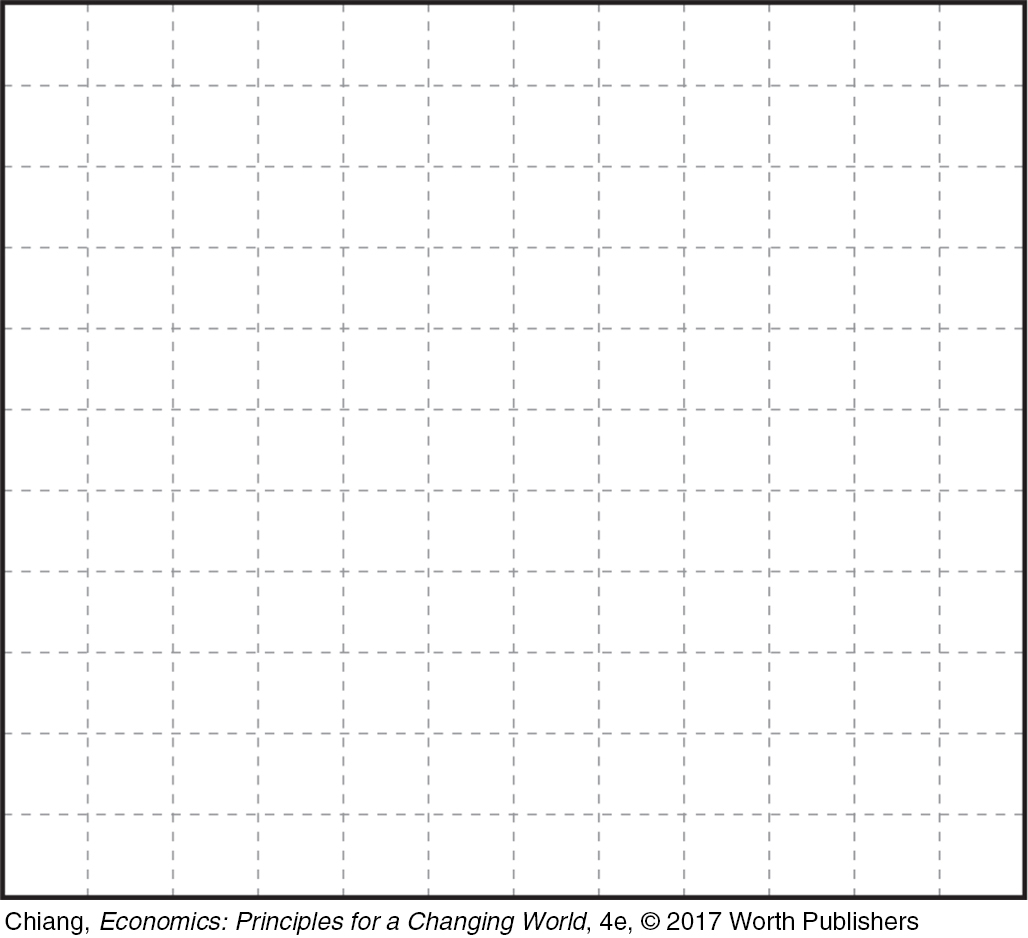QUESTIONS AND PROBLEMS
Check Your Understanding
Question 13.1
1. Why is it important for the Federal Reserve Board to be independent of the executive branch of the federal government?
Question 13.2
2. When the interest rate falls, why do people desire higher money balances?
Question 13.3
3. Describe how open market operations alter the supply of money.
Question 13.4
4. What does the equation of exchange, M × V = P × Q, help to explain?
Question 13.5
5. How is the impact of expansionary monetary policy different when the economy is considerably below full employment than when it is at full employment?
Question 13.6
6. How do sticky wages and prices make monetary policy effective in the short run?
Apply the Concepts
Question 13.7
7. Suppose a rise in consumer confidence causes aggregate demand to increase, resulting in a short-
Question 13.8
8. It seems that each time the Fed raises interest rates, the stock market has an awful few days. Why do higher interest rates have such an impact on the stock market?
Question 13.9
9. If the Fed persistently pursues an easy money policy, what is the likely outcome?
Question 13.10
10. When NASA scientists were operating the Mars rovers to get them to drive across the Martian landscape and collect and analyze rocks and crevices, the scientists complained that the 20-
Question 13.11
11. Suppose a devastating drought leads to higher food prices, causing a negative supply shock to occur. What type of monetary policy should the Fed use if the goal is to maintain price stability in the economy? What are the consequences of doing so?
Question 13.12
12. Explain how the housing bubble at the beginning of the 21st century led to the Taylor rule target exceeding the actual federal funds rate. Could increasing the federal funds rate during this time have helped to reduce the severity of the last recession?
In the News
Question 13.13
13. There are two forces that cause the economy to grow. One is real, the other is an illusion. The real force—
There are two forces that cause the economy to grow. One is real, the other is an illusion. The real force—
Does this quote illustrate the short-
Question 13.14
14. In 2016 Greece faced another set of hurdles in its ongoing saga of managing its debt. In order for Greece to maintain its obligations under the IMF and European Central Bank bailout packages, it must continue to cut government spending, particularly pensions that have put a strain on the budget. Greece’s leaders, meanwhile, have argued that the required spending cuts will push the economy back into recession. Using an AD/AS model, show what the required budget cuts might do to an economy that is still experiencing slow growth.
Solving Problems
Question 13.15
15. Why are supply shocks so much harder than demand shocks for monetary policy to adjust? Use the grid below to show your answer to this question.

WORK IT OUT  | interactive activity
| interactive activity
Question 13.16
16. In 2012 U.S. inflation was 2.1% and output was 4.8% below its long-
If the inflation target is 2%, what was the federal funds target in 2012 using the Taylor rule?
If the actual federal funds rate was 0.1% in 2012, did the Taylor rule estimate the target accurately?
Again assuming an inflation target of 2%, what was the federal funds target in 2015 using the Taylor rule?
If the actual federal funds rate was 0.4% in 2015, did the Taylor rule do a better job predicting interest rates compared to 2012? Explain your answer.
 USING THE NUMBERS
USING THE NUMBERS
Question 13.17
17. According to By the Numbers, what were the approximate interest rates for the following types of loans in December 2015: federal funds rate, discount rate, prime rate, 30-
Question 13.18
18. According to By the Numbers, in what region outside of the United States is the largest percentage of U.S. $100 bills in circulation held? Why is the answer not China, which holds the most U.S. debt?